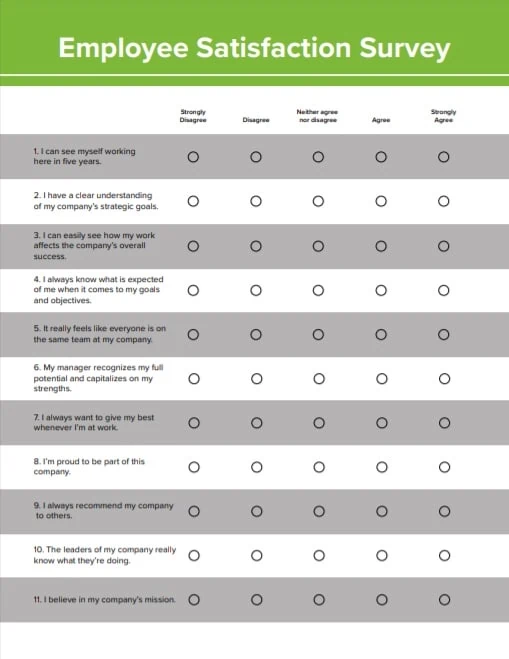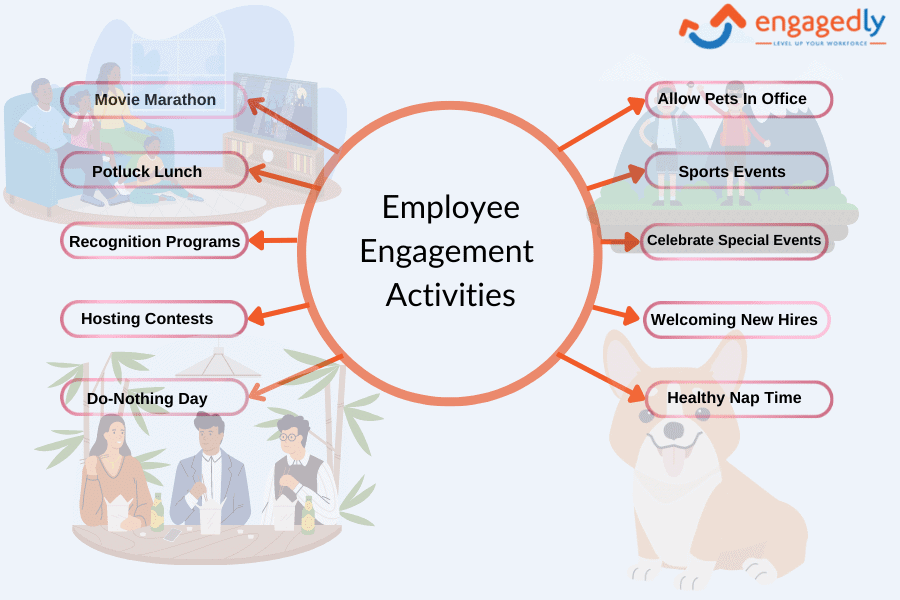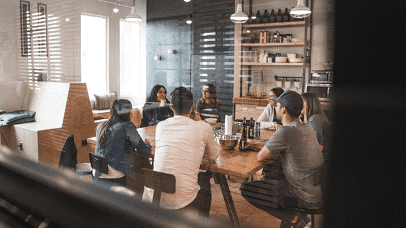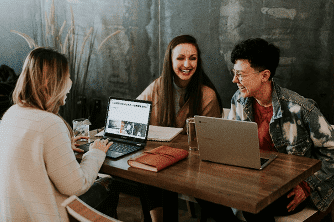Here’s a reality check: only 1 in 5 employees get feedback weekly, yet about half of managers believe they give it often. That’s not just a miscommunication problem—it’s a crisis in how organizations handle employee feedback management.
The stakes? 41% of employees have left a job because they felt they weren’t listened to and received little or no feedback. In a talent market where every resignation costs companies thousands of dollars and months of productivity, can you really afford to get feedback wrong?
Welcome to a new era where employee feedback management isn’t just about annual surveys anymore. It’s about AI-powered listening platforms that capture sentiment in real time, predict turnover before it happens, and turn employee voices into actionable intelligence.
If you’re still relying on spreadsheets and once-a-year check-ins, you’re not just behind—you’re losing people.
Let’s explore how modern employee feedback management solutions are revolutionizing the way organizations listen, learn, and lead.
Why Traditional Employee Feedback Management Is Failing
Before we dive into solutions, let’s address what’s broken. The numbers tell a sobering story.
98% of employees disengage from their work when they receive little or no feedback. That’s almost everyone. Meanwhile, 77% of HR executives believe that annual performance reviews don’t accurately represent employee performance.
So we have a system that:
- Employees don’t trust (because it’s outdated and infrequent)
- Managers don’t believe in (because it doesn’t reflect reality)
- HR knows doesn’t work (because the data proves it)
Yet many organizations keep using it. Why? Because they lack a better employee feedback management framework.
As Elon Musk wisely notes: “I think it’s very important to have a feedback loop, where you’re constantly thinking about what you’ve done and how you could be doing it better.”
The old model of employee feedback management treated feedback as an event—something that happened quarterly or annually. The new model treats it as a continuous conversation, powered by technology that makes it effortless, insightful, and actionable.
The Business Case for Modern Employee Feedback Management
Still wondering if upgrading your employee feedback management system is worth the investment? Let the ROI speak for itself:
Engagement Impact: 80% of employees receiving meaningful weekly feedback report full engagement. Compare that to the disengagement crisis plaguing most organizations.
Retention Benefits: Companies that conduct regular strength-based feedback reduce turnover by 14.9%. When the average cost of replacing an employee ranges from 50-200% of their salary, that’s massive savings.
Performance Gains: Highly engaged teams show 21% greater profitability, and this engagement is directly tied to consistent, quality feedback.
Recognition Matters: Employees who receive recognition from management are 69% more likely to perform better.
The message is clear: effective employee feedback management isn’t a “nice-to-have.” It’s a business imperative that directly impacts your bottom line through improved engagement, reduced turnover, and enhanced performance.
What Is Employee Feedback Management (And What It Isn’t)
Let’s get clear on terminology. Employee feedback management is the systematic process of collecting, analyzing, and acting on employee insights to improve workplace experiences, performance, and organizational outcomes.
It’s NOT:
- Just annual performance reviews
- Only top-down communication from managers
- A way to catch employees doing things wrong
- A one-time project with an end date
Employee feedback management IS:
- Continuous, multi-directional communication
- A combination of structured and unstructured feedback channels
- Data-driven insights that inform people strategy
- A cultural commitment to listening and responding
As leadership expert Ken Blanchard famously said: “Feedback is the breakfast of champions”. Just like we need breakfast to fuel us through the day, organizations need continuous feedback to perform at their best.
The 3 Pillars of Effective Employee Feedback Management in 2025
Modern employee feedback management systems stand on three essential foundations:
1. Multi-Channel Collection
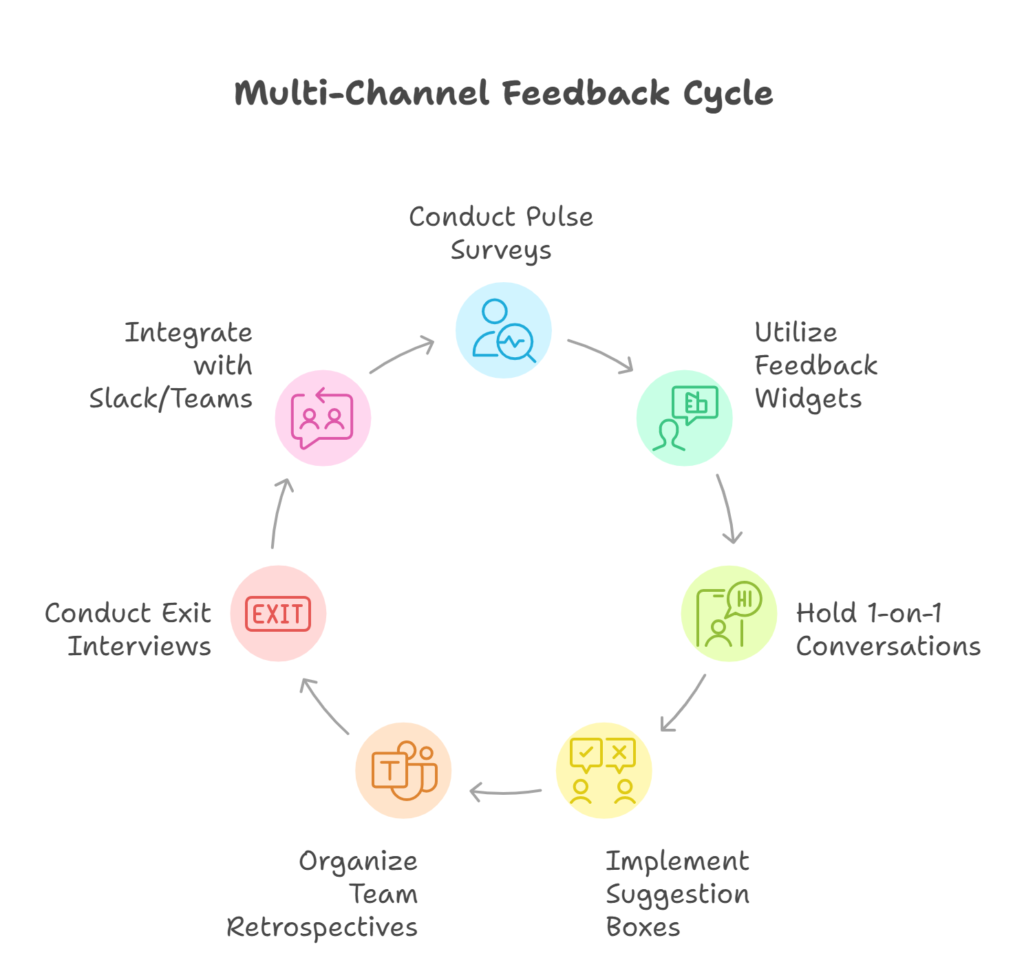
Whether it’s a Slack poll, mobile pulse survey, or always-on feedback widget, smart employee feedback platforms let you collect insights across channels. The key is variety—because not everyone shares feedback the same way.
Collection channels include:
- Pulse surveys: Quick, frequent check-ins (weekly or bi-weekly)
- Annual engagement surveys: Comprehensive deep-dives into culture and satisfaction
- Always-on feedback: Open channels where employees can share thoughts anytime
- 1-on-1 conversations: Structured manager-employee dialogues
- Exit interviews: Capturing insights from departing employees
- Suggestion boxes: Anonymous feedback for sensitive topics
- Team retrospectives: Collective reflection on what’s working and what isn’t
The mistake many organizations make? Relying on just one channel. 60% of employees would like to receive feedback daily or weekly, but not everyone wants to fill out a survey. Some prefer face-to-face conversations. Others feel safer with anonymous tools. Your employee feedback management system needs to accommodate all preferences.
2. AI-Powered Analysis
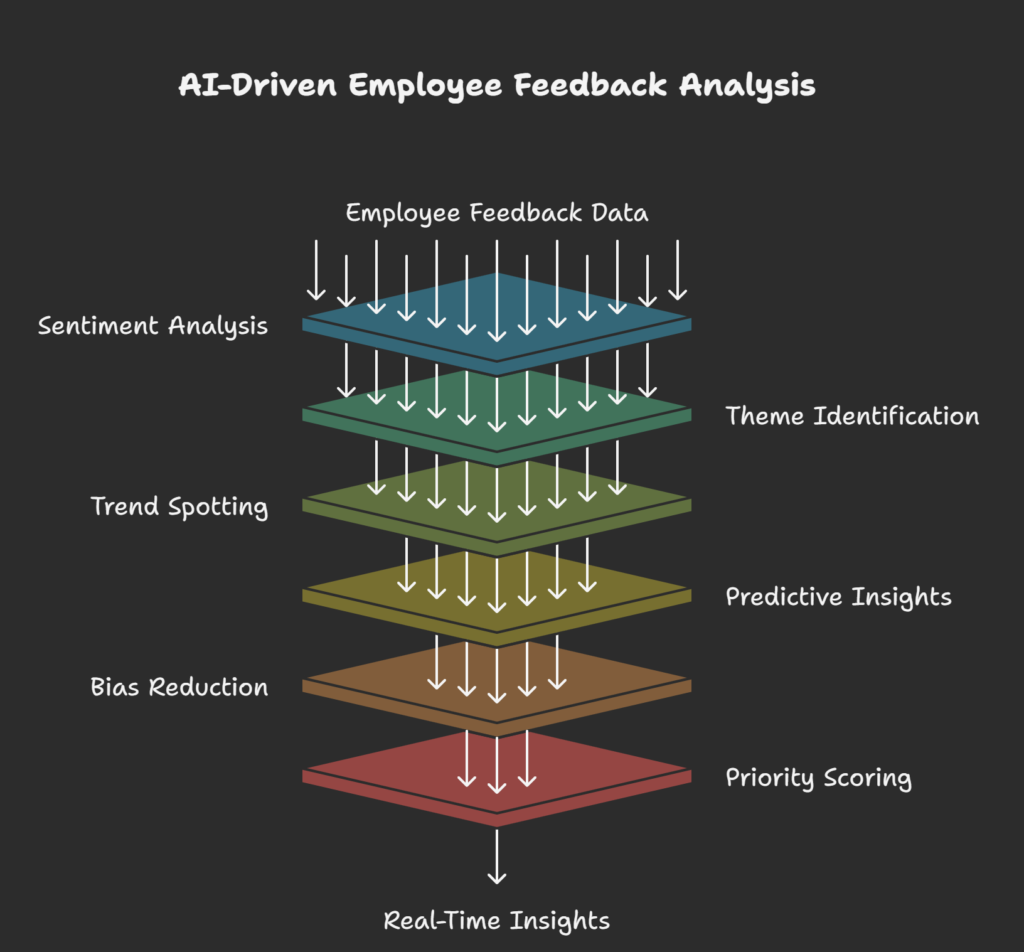
Here’s where 2025’s employee feedback management solutions truly shine. AI-powered employee feedback software helps decode sentiment, analyze feedback highlight themes, and detect patterns that manual reviews miss.
What AI brings to employee feedback management:
- Sentiment analysis: Detects emotional tone in open-ended responses
- Theme identification: Automatically categorizes feedback into topics (compensation, workload, management, culture)
- Trend spotting: Identifies patterns over time and across departments
- Predictive insights: Flags early warning signs of disengagement or turnover
- Bias reduction: Ensures objective analysis free from human interpretation bias
- Priority scoring: Ranks issues by frequency and emotional intensity
AI primarily analyzes text-based communications that employees are already creating, such as survey responses (especially open-ended ones), internal instant messages, email and comments on performance reviews.
The result? Instead of drowning in data, HR teams get actionable intelligence. Instead of waiting months to spot trends, they see issues in real-time. See how Engagedly brings AI into core people operations to simplify workflows, support data-informed decisions, and optimize talent management.
3. Action Loops and Accountability
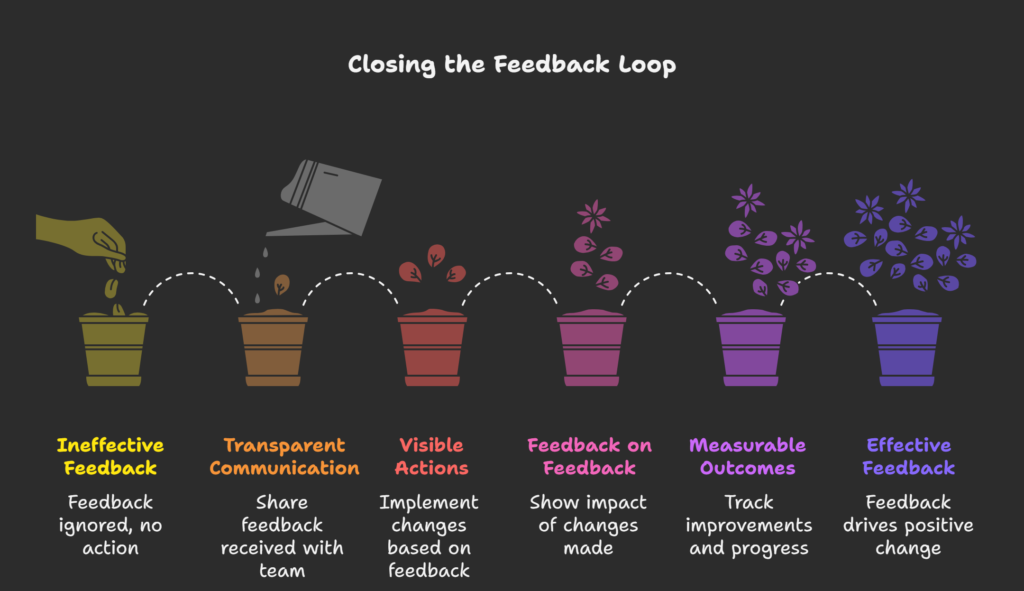
This is where most employee feedback management systems fail. They collect feedback beautifully, analyze it brilliantly, and then… nothing happens. Employees stop participating because they don’t see results.
Only 14% of employees think their employer uses employee feedback to improve the employee experience, and even less (12%) receive personalized feedback on their performance.
Effective employee feedback management requires:
- Transparent communication: Sharing what you heard and what you’re doing about it
- Visible actions: Implementing changes based on feedback
- Feedback on feedback: Letting employees know how their input was used
- Measurable outcomes: Tracking improvements and reporting back
- Manager enablement: Equipping team leaders with insights and action plans
As Jack Canfield notes: “Leaders cannot work in a vacuum. They may take on larger, seemingly more important roles in an organization, but this does not exclude them from asking for and using feedback. In fact, a leader arguably needs feedback more so than anyone else”.
How AI Is Transforming Employee Feedback Management
The shift from traditional to AI-powered employee feedback management isn’t just incremental—it’s revolutionary. Here’s what’s changing:
Real-Time Insight Generation
Traditional employee feedback management: Wait 3-6 months for survey results, then spend weeks analyzing data.
AI-powered approach: Automation ensures you’re collecting insights in real time, empowering you to respond quickly to the needs of your workforce.
Example: An AI-powered employee feedback management platform notices a sudden drop in sentiment scores within your engineering team. Instead of discovering this months later in an annual survey, managers are alerted immediately and can address the issue before it escalates to resignations.
Predictive Turnover Prevention
By integrating AI, they can even predict when employees might disengage, giving you a heads-up to take action before issues escalate. Discover how Engagedly’s AI-powered platform streamlines HR processes, elevates performance outcomes, and enhances every stage of the employee lifecycle.
This is game-changing for employee feedback management. AI analyzes patterns in feedback, engagement scores, communication frequency, and other signals to identify employees at risk of leaving—sometimes weeks or months before they’ve made the decision themselves.
Personalized Employee Experiences
Whether it’s automating personalized surveys based on an employee’s journey or surfacing key trends in real time, technology allows you to keep your finger on the pulse of your organization.
Modern employee feedback management systems don’t send the same survey to everyone. They tailor questions based on:
- Employee tenure (different questions for new hires vs. long-term employees)
- Department and role
- Recent events (promotion, project completion, team changes)
- Previous feedback patterns
Sentiment Analysis at Scale
Incorporating AI-powered sentiment analysis into your feedback collection strategy can reveal even more. These tools analyze not just the responses but the emotional tone behind them, uncovering hidden patterns that might otherwise go unnoticed.
This means your employee feedback management system can detect:
- Frustration even in seemingly neutral comments
- Declining morale before it becomes visible
- Department-specific issues that wouldn’t show up in aggregate data
- Individual employees who need immediate support
Anonymous Feedback with Psychological Safety
Not everyone feels comfortable speaking up directly. Use employee feedback tools that offer anonymous options so people can be honest without fear.
AI-powered employee feedback management platforms can maintain anonymity while still providing useful aggregate insights to managers. Employees can share sensitive concerns without fear of retaliation, while leaders still get the information they need to improve.
Signs Your Employee Feedback Management System Needs an Upgrade
How do you know if your current approach to employee feedback management is falling short? Watch for these warning signs:
1. Declining Survey Participation
Low survey response rates usually mean employees are either tired of repetitive questions or don’t believe their input matters.
If your response rates are dropping year over year, your employee feedback management system lacks credibility. Employees have concluded that participating is pointless because nothing changes.
2. Manager Disconnect
If insights stay stuck in HR dashboards and never reach team leads, you’ve got a disconnect. Good feedback tools for management should translate data into clear next steps.
Employee feedback management fails when insights don’t reach the people who can act on them. Your system needs to democratize data, giving managers visibility into their teams’ sentiment and specific, actionable recommendations.
3. Annual-Only Approach
Annual surveys are too slow to capture real-time sentiment. If you’re still stuck in this cycle, your process lacks agility. In 2025, real-time feedback software is a must-have for spotting issues before they escalate.
The workplace moves too fast for annual check-ins. By the time you discover an issue, talented employees have already left or disengaged beyond recovery.
4. No Psychological Safety
If people avoid sharing honest feedback or only give surface-level answers, your system likely lacks anonymity or trust.
Effective employee feedback management requires psychological safety. Employees need to believe they can share concerns without negative consequences. If your feedback is all positive with no constructive criticism, that’s a red flag—not a success metric.
Building Your Employee Feedback Management Strategy: A Practical Framework
Ready to upgrade your approach? Here’s a step-by-step framework for implementing effective employee feedback management:
Step 1: Audit Your Current State
Start by honestly assessing where you stand:
- What feedback channels do you currently use?
- How often do you collect feedback?
- What’s your average participation rate?
- How long does it take from feedback collection to action?
- Do employees feel heard?
Audit your feedback channels—Identify where unstructured feedback already exists (e.g., surveys, internal messaging apps, exit interviews).
Step 2: Define Clear Objectives
What do you want your employee feedback management system to achieve? Common goals include:
- Reduce turnover by X%
- Improve engagement scores by X points
- Increase manager-employee conversation frequency
- Identify and address issues before they escalate
- Create data-driven insights for leadership decisions
Be specific. “Better feedback” isn’t a measurable goal. “Reduce voluntary turnover by 20% through earlier identification of at-risk employees” is.
Step 3: Choose the Right Technology
Choose the right AI tools—Look for platforms with strong NLP capabilities, customizable dashboards and data privacy safeguards.
Your employee feedback management platform should offer:
- Multiple feedback collection methods
- AI-powered sentiment and theme analysis
- Real-time dashboards and alerts
- Manager-friendly insights and recommendations
- Integration with your existing HR tech stack
- Mobile accessibility
- Strong data security and privacy controls
- Action-planning workflows
Step 4: Start Small and Scale
Start small—Pilot with a specific use case, such as analyzing open-ended survey responses.
Don’t try to revolutionize your entire employee feedback management approach overnight. Start with:
- One department or team
- One specific feedback channel (pulse surveys, for example)
- One key metric to improve
Prove value, learn from challenges, and then expand.
Step 5: Train and Enable
Your employee feedback management system is only as good as the people using it. Invest in training for:
- HR teams: How to interpret data and design interventions
- Managers: How to access insights, have feedback conversations, and take action
- Employees: Why feedback matters and how to provide constructive input
Step 6: Close the Loop Visibly
Act on insights—Demonstrate that feedback leads to meaningful change to build credibility and engagement.
After every feedback cycle, communicate:
- What you heard (“Here are the top themes from this quarter’s feedback”)
- What you’re doing about it (“Based on your input, we’re implementing…”)
- How you’ll measure progress (“We’ll track these metrics and report back”)
This transparency transforms employee feedback management from a checkbox exercise into a powerful tool for cultural change.
Best Practices for Employee Feedback Management in 2025
Want to maximize the impact of your employee feedback management efforts? Follow these proven practices:
Keep It Continuous, Not Episodic
80% of employees want feedback at the moment rather than delivering aggregated feedback for an annual or bi-annual review.
The future of employee feedback management is continuous. Think ongoing conversation, not annual event. Implement:
- Weekly pulse surveys (2-3 questions)
- Monthly team check-ins
- Quarterly engagement deep-dives
- Annual comprehensive reviews
Make It Bi-Directional
Employee feedback management shouldn’t flow only one direction. Just 42 percent of U.S. employees report having a chance to formally provide feedback to their manager, and only 24 percent say they have formally rated their manager’s performance.
Create channels for:
- Employees to give feedback to managers
- Peers to recognize each other
- Teams to share feedback with leadership
- Cross-functional groups to collaborate on improvements
Prioritize Action Over Analysis
Data without action is worthless. Once insights are surfaced, HR teams can prioritize the issues they need to immediately address based on frequency and emotional intensity.
Your employee feedback management system should help you:
- Identify high-impact, quick-win improvements
- Assign ownership for action items
- Set deadlines and track progress
- Measure the impact of changes
Respect Privacy and Build Trust
A 2025 Stanford study found 78% of workers distrust AI tools handling personal feedback, fearing surveillance or misinterpretation.
Be transparent about:
- What data you collect
- How AI analyzes it
- Who can see individual vs. aggregate feedback
- How you protect employee privacy
- That feedback won’t be used punitively
Integrate With Performance Management
Employee feedback management shouldn’t exist in isolation. Connect it to:
- Goal-setting and OKRs
- Performance reviews
- Development planning
- Compensation decisions
- Promotion processes
This integration ensures feedback drives meaningful career outcomes, not just conversation.
The Future of Employee Feedback Management: What’s Next?
As we move deeper into 2025 and beyond, employee feedback management will continue evolving. Here’s what’s on the horizon:
Conversational AI Feedback
AI-driven tools, powered by natural language processing (NLP) are enabling real time, open-ended conversations via Slack or Teams. All designed to capture raw employee sentiments.
Instead of surveys, imagine AI chatbots that have natural conversations with employees, asking follow-up questions based on responses and capturing nuanced feedback in real-time.
Predictive Analytics
These systems don’t just collect employee feedback, they translate it into action plans to help predict burnout or turnover with up to 85% accuracy.
Future employee feedback management platforms won’t just tell you what employees are feeling now—they’ll predict how they’ll feel next quarter based on historical patterns and external factors.
Emotional Intelligence AI
The combination of AI and emotional intelligence provides unique insights and personalized support.
AI will become better at understanding context, detecting sarcasm, recognizing cultural nuances, and providing empathetic, personalized responses and recommendations.
Integration Across the Employee Lifecycle
AI-powered listening can be integrated across every stage of the employee journey. During onboarding, it can analyze feedback from new hires to improve training and ease the transition into the organization.
Employee feedback management will become seamless across:
- Recruiting (candidate experience feedback)
- Onboarding (new hire sentiment tracking)
- Development (learning effectiveness)
- Performance (continuous coaching)
- Offboarding (exit insights)
Real-World Success: Employee Feedback Management in Action
Let’s look at how organizations are using modern employee feedback management to drive results:
Example 1: Retail Chain Reduces Turnover A national retail chain implemented an AI-powered employee feedback management platform with weekly pulse surveys and sentiment analysis. Within six months, they:
- Identified store locations with low manager scores before turnover spiked
- Provided targeted coaching to struggling managers
- Reduced frontline employee turnover by 32%
- Saved $2.4 million in recruiting and training costs
Example 2: Tech Company Improves Remote Culture A software company struggling with remote team cohesion deployed continuous employee feedback management with anonymous channels. Results:
- Discovered remote employees felt excluded from decision-making
- Implemented changes to meeting structures and communication norms
- Increased remote employee engagement scores by 28 points
- Improved retention of distributed team members by 41%
Example 3: Healthcare System Prevents Burnout A hospital system used predictive analytics within their employee feedback management platform to identify nurses at risk of burnout. Actions taken:
- Proactively adjusted schedules for at-risk staff
- Connected them with mental health resources
- Reduced nurse turnover by 27% year-over-year
- Improved patient satisfaction scores as staff wellbeing improved
Your Employee Feedback Management Roadmap
Ready to transform your approach? Here’s your action plan:
Month 1: Foundation
- Audit current feedback channels and participation rates
- Define 2-3 specific objectives for your employee feedback management initiative
- Research and demo AI-powered feedback platforms
- Build business case with projected ROI
Month 2-3: Pilot
- Select one department or team for pilot program
- Implement chosen employee feedback management platform
- Train managers and participants
- Launch with clear communication about goals and expectations
Month 4-6: Learn and Iterate
- Collect feedback on the feedback process (meta, but important!)
- Analyze results and identify quick wins
- Demonstrate visible actions taken based on employee input
- Refine processes based on lessons learned
Month 7-12: Scale
- Expand to additional departments
- Integrate with performance management and HRIS systems
- Build manager capability with ongoing training
- Measure impact on engagement, retention, and performance metrics
Ongoing: Continuous Improvement
- Regular review of participation rates and data quality
- Quarterly assessment of action item completion
- Annual strategy refresh based on organizational priorities
- Stay current with evolving AI capabilities in employee feedback management
Making Employee Feedback Management Work: Final Thoughts
Let’s return to where we started: the massive gap between how often managers think they give feedback and how often employees actually receive it. That disconnect isn’t just awkward—it’s expensive, demotivating, and completely avoidable.
Modern employee feedback management solutions powered by AI aren’t replacing human connection—they’re enabling it. They’re making it possible to listen at scale, understand nuance, predict problems, and take action before issues become crises.
92% of participants said constructive feedback helps them improve performance. Employees want feedback. They crave it. They’ll leave organizations that don’t provide it and thrive in cultures that do.
The question isn’t whether your organization should invest in better employee feedback management. It’s whether you can afford not to.
As George Bernard Shaw reminded us: “The single biggest problem in communication is the illusion that it has taken place.” Don’t let that be your organization’s epitaph.






